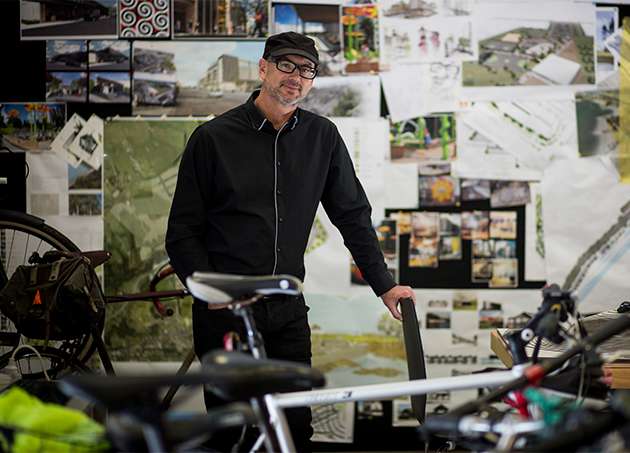Good urban design in many New Zealand cities can help human ailments like stress, anxiety and depression, a leading designer says.
David Irwin, creative director of design studio Isthmus Group, says “today our people are crying silently – perhaps drowned out by the noise and cacophony of city life and 21st century lifestyle.”
His comments come as Isthmus is working on a number of suburban regeneration projects in Auckland and Wellington which seek, through new design models, to put community spirit back into suburban streets and incorporate the ideals of the Kiwi lifestyle.
The projects aim to construct up to 20,000 new homes across Auckland in the next 10 to 15 years.
Start your property search
Irwin believes in recent decades planners have forgotten who and what they are planning for: “We have forgotten the basic needs of who we are as a people, we have somehow created a divisive world.
“Cities are systems in which people are meant to thrive but their design is instead accentuating many of the human ailments such as stress, anxiety and depression.”
This view is shared by many experts. Jason Bryne, associate professor of environmental planning at Griffith University in Australia, says recent research points to the possibility that living in cities might be associated with higher rates of depression and anxiety.
“The range of potential explanations include issues related to the physical environment of cities – such as heat, noise, light, social isolation,” he says. “The bright lights, busy streets and noise of cities can increase cognitive load.
“It can be difficult to escape that overload and ‘decompress’ in cities. There are usually fewer green spaces and fewer places to escape crowds; some even contend neglected landscaping and broken facilities may increase stress for some people.”
In New Zealand, Irwin says Kiwis across all cultures have a strong connection with the land, like to be outside (and to see the outdoors from inside their homes), to barbecue and to share meals: “So we are looking to see how we can incorporate these concepts - and values like individuality and DIY spirit - with greater housing density so people are comfortable with that.”
Irwin says Isthmus is working on designs for public housing through a mix of the replacement of old houses and the construction of new homes on vacant land.
“In some suburbs people have lost the ability to talk with their neighbours and it is this social isolation that is causing so much grief,” he says. “We don’t need to have coffee in a café to interact with others, it should be possible to talk with neighbours, to bump into them in the street.”
He says Isthmus has studied old areas like Freemans Bay, Ponsonby and Devonport, suburbs designed before the advent of cars.

David Irwin from urban design firm Isthmus. Photograph / Dean Purcell.
“We wanted to see if we could extract their essence and apply those qualities of ‘New Zealandness’. They were based on a main street with residential streets off to the side so people could walk to get the newspaper and a coffee, catch the bus or go to the doctor.
“House doors and windows are oriented towards the street so everyone’s got a relationship with their neighbour,” he says. “With that goes a sense of safety as opposed to the ‘80s suburbs where you drive in behind your big wall, close the garage door and bam, you’re gone.”
Irwin says in many areas “we are not starting from a position of excellence. We are actually looking at a pile of houses that are below standard and people are suffering not just social isolation but health issues.
“The city plagues of old have been fixed – the rats are mainly gone – but old diseases have been replaced by new diseases like overcrowding, damp cold houses and rheumatic fever,” he says. “I’ve been inside houses where you can see your breath; what we are talking about is a basic human right to comfortable shelter.”
But Irwin says cities are not just about the physical aspects of the built world but are also intertwined with social aspects of us as people.
“The city is where most of us live; it’s where we bring up our families, where we go to sleep, where we meet our friends, it’s where our loved ones are born and where they die and yet we are failing to thrive in our cities, our suburbs and in the heart of our central business districts.
“We are failing to remember that we are human with human needs. We are social animals with needs real and complex and the environment nourishes our very being.
“As designers we have a responsibility to design what is best for our planet and for ourselves.”
The Isthmus designs are part of the Kāinga Ora urban development projects taking place across a number of Auckland suburbs including Northcote, Mt Roskill, Hobsonville, Mangere and Tamaki.
Formed this month, Kāinga Ora brings together the KiwiBuild unit, Housing New Zealand and its development subsidiary HLC. Its role is to be a public housing landlord charged with providing good quality, warm, dry and healthy rental housing.
It is to also work in partnership to deliver quality urban development connecting homes with jobs, transport, open spaces and the facilities they need.
- This content was supplied by Kāinga Ora










